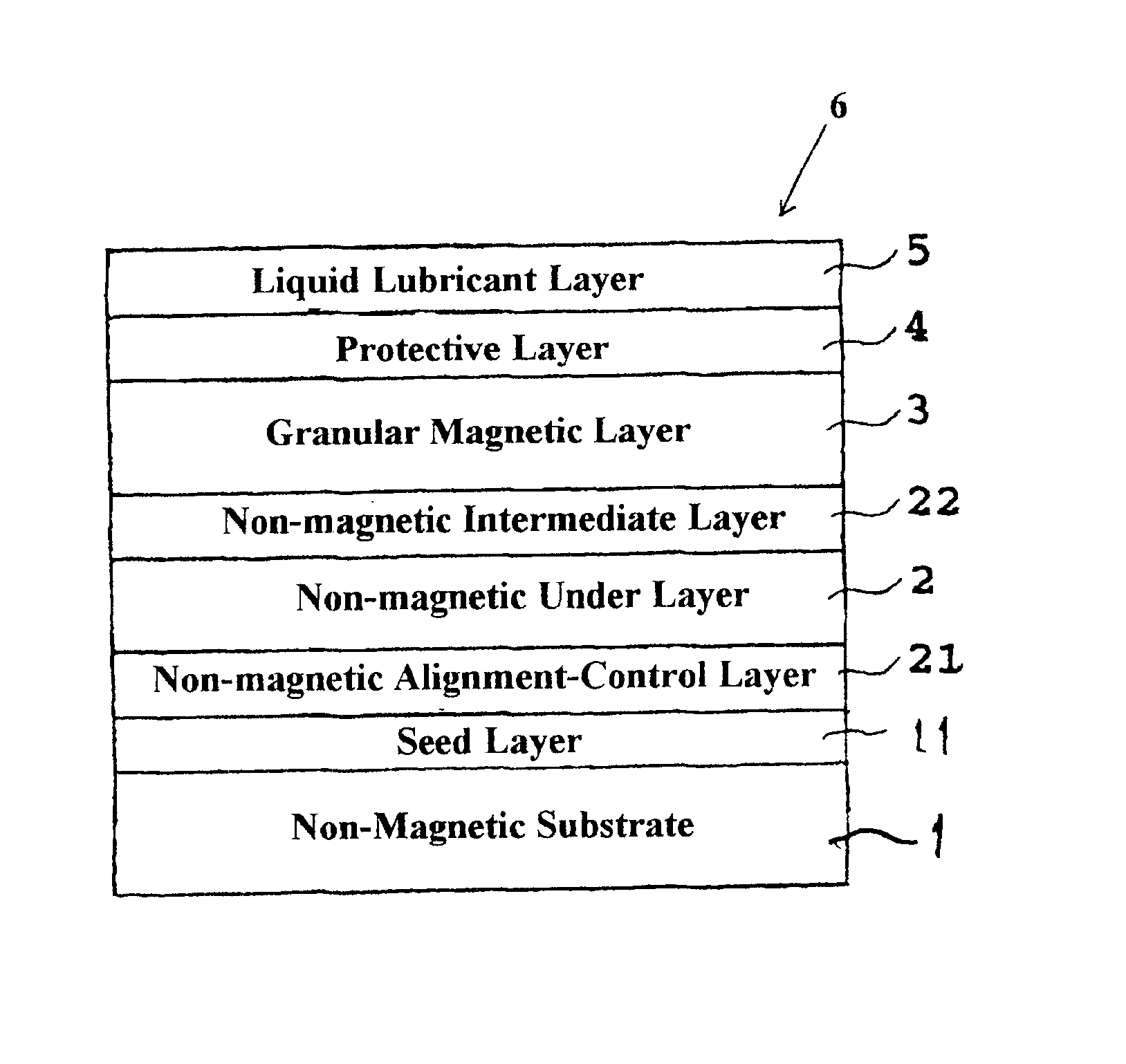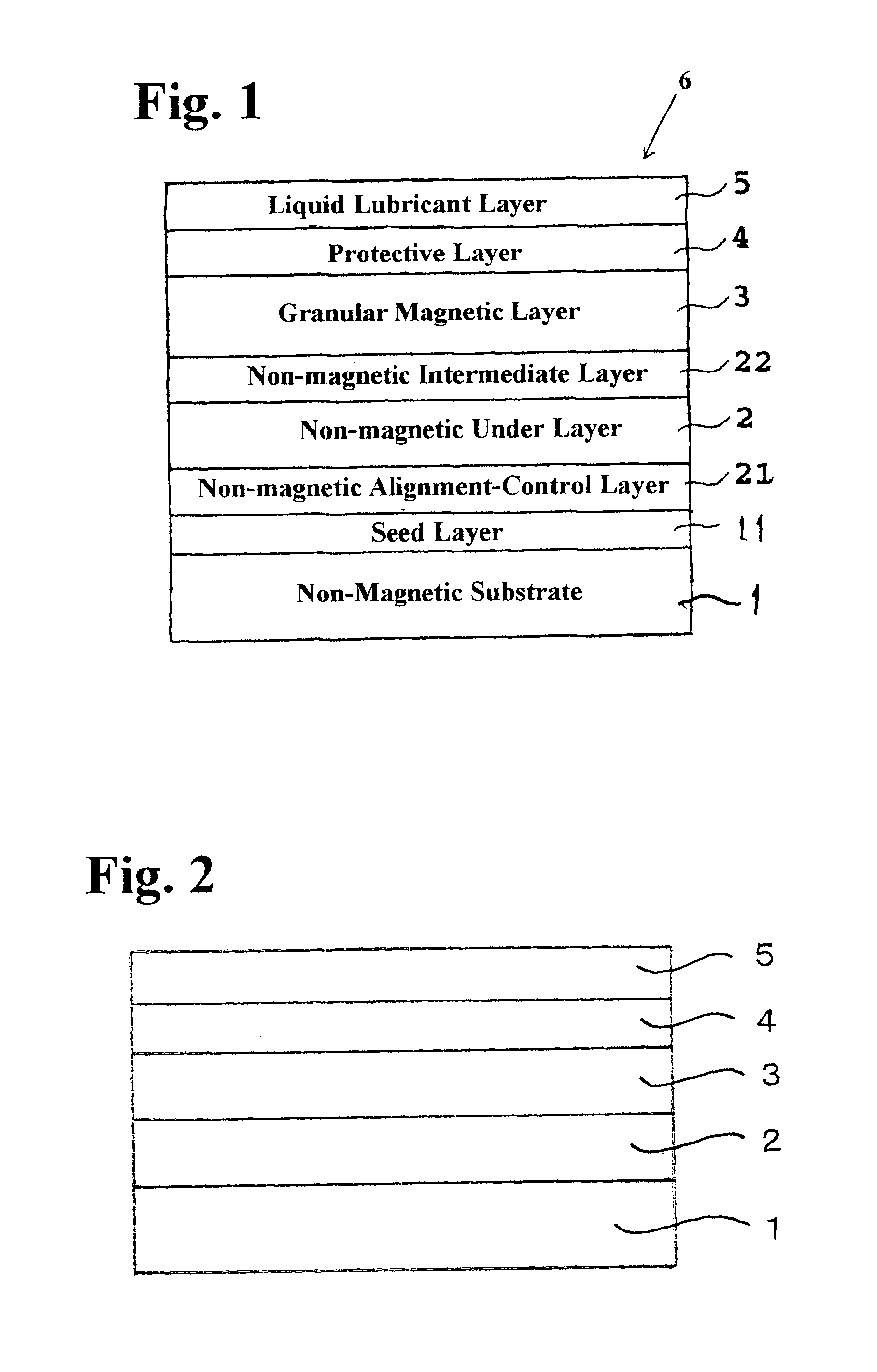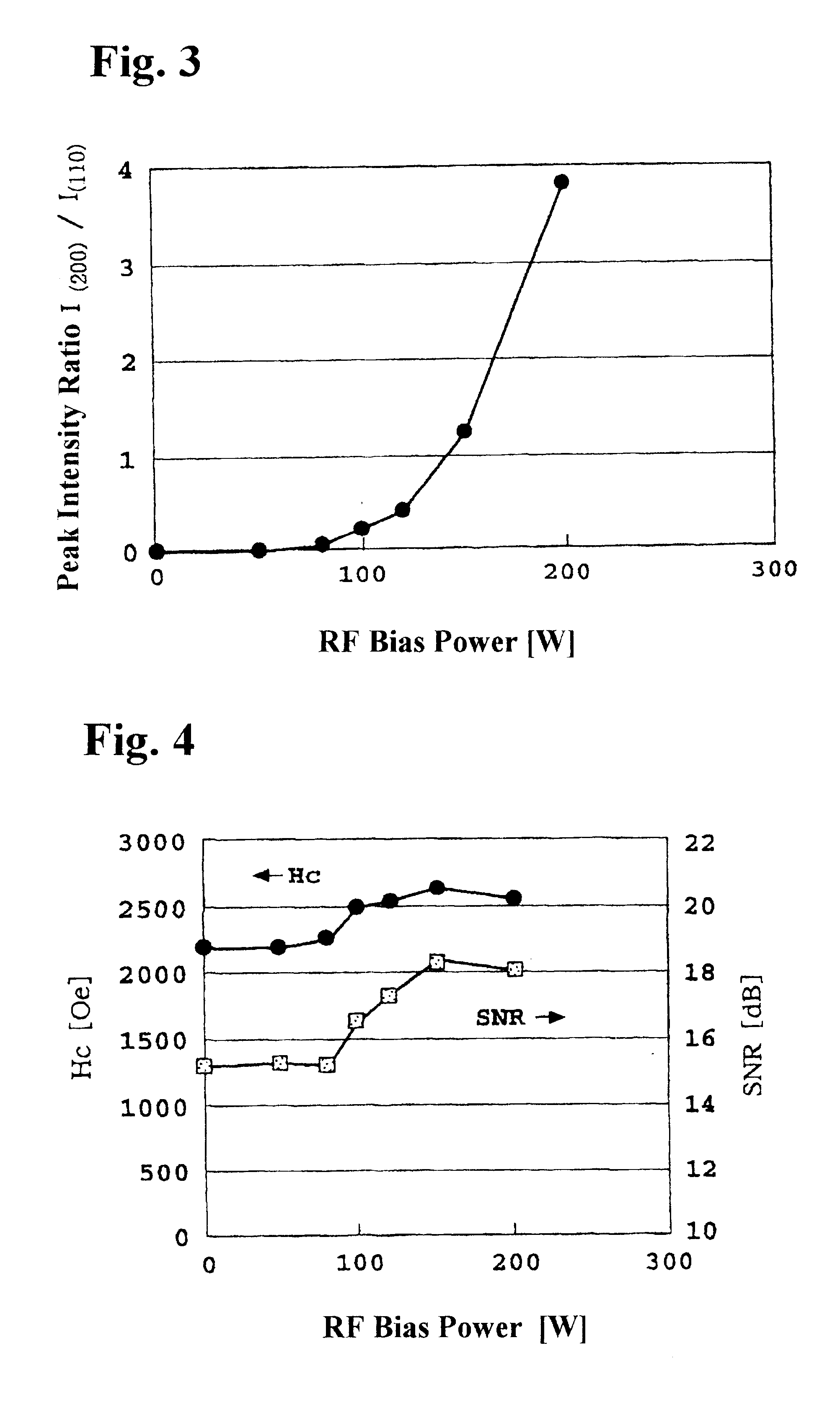Magnetic recording medium and manufacturing method therefore
a technology of magnetic recording medium and manufacturing method, which is applied in the field of magnetic recording medium, can solve the problems of insufficient orientation control of magnetic layer, increased media noise, and insufficient media noise, and achieves the effect of improving crystal orientation and crystallinity of alignment-control, easy production, and simplified manufacturing process
- Summary
- Abstract
- Description
- Claims
- Application Information
AI Technical Summary
Benefits of technology
Problems solved by technology
Method used
Image
Examples
example 2
Referring now to FIG. 5, another embodiment of a magnetic recording medium was produced in the same manner as in Example 1 except that a non-magnetic intermediate layer 22 was formed on under-layer 3. Non-magnetic intermediate layer 22 was formed under an argon gas pressure of 5 mTorr after laminating under-layer 2 on substrate 1. Non-magnetic intermediate layer 22 was formed using an alloy of Co-35 at % Cr having thickness of about 5 nm. RF bias of 150 W was applied when under-layer 2 was formed.
As in Example 1, coercive force Hc was measured for the produced medium using a vibrating sample magnetometer (VSM). Signal-to-noise ratio (SNR) at the linear recording density of 270 KFCl was measured by a spinning stand tester using a GMR head.
The results are shown in Table 1 below. For comparison, Table 1 also shows, the characteristics of a medium without an intermediate layer 22 (as in Comparative Example 1) to which an RF bias of 150 W was applied.
As noted in Table 1, when intermediat...
example 3
Referring now to FIG. 6, three media embodiments (I, ii, and iii, shown later) of magnetic recording media were produced, as in Example 1, with the exception that non-magnetic alignment-control layer 21 was formed between non-magnetic substrate 1 and non-magnetic under layer 2.
In this example, non-magnetic alignment-control layer 21, having a thickness of 30 nm, was formed by RF sputtering using various material under argon gas pressure of 8 mTorr before applying under-layer 2. RF bias was not applied during lamination of under-layer 2.
As in Examples 1 and 2, coercive force Hc was measured for each of the produced embodiments using a vibrating sample magnetometer (VSM). A signal-to-noise ratio (SNR), at the linear recording density of 270 KFCl, was measured by a spinning stand tester using a GMR head. The results are shown in Table 2.
Table 2 also shows intensity ratio I.sub.(200) / I.sub.(110) of the X-ray diffraction peaks of the under-layer of each medium. Table 2 further shows, fo...
example 4
Referring now to FIG. 7, an embodiment of a magnetic recording media was produced in the same manner as in Example 1 except that seed layer 11 and a non-magnetic alignment layer were applied between non-magnetic substrate 1 and non-magnetic under layer 2.
Seed layer 11 was formed by RF sputtering using various materials under the argon gas pressure of 5 mTorr and had a thickness of 30 nm. The subsequent non-magnetic alignment-control layer 21 of MgO, having thickness of 30 nm, was formed by RF sputtering prior to laminating under-layer 2. RF bias was not applied when under-layer 2 was laminated on non-magnetic alignment-control layer 21.
As in Examples 1, 2 and 3, coercive force Hc was measured for each of the produced media using a vibrating sample magnetometer (VSM). Signal-to-noise ratio (SNR) was measured for each produced media at the linear recording density of 270 kFCl. Signal-to-noise ratio (SNR) was measured by a spinning stand tester using a GMR head.
The results are shown in...
PUM
| Property | Measurement | Unit |
|---|---|---|
| thickness | aaaaa | aaaaa |
| thickness | aaaaa | aaaaa |
| thickness | aaaaa | aaaaa |
Abstract
Description
Claims
Application Information
 Login to View More
Login to View More - R&D
- Intellectual Property
- Life Sciences
- Materials
- Tech Scout
- Unparalleled Data Quality
- Higher Quality Content
- 60% Fewer Hallucinations
Browse by: Latest US Patents, China's latest patents, Technical Efficacy Thesaurus, Application Domain, Technology Topic, Popular Technical Reports.
© 2025 PatSnap. All rights reserved.Legal|Privacy policy|Modern Slavery Act Transparency Statement|Sitemap|About US| Contact US: help@patsnap.com



